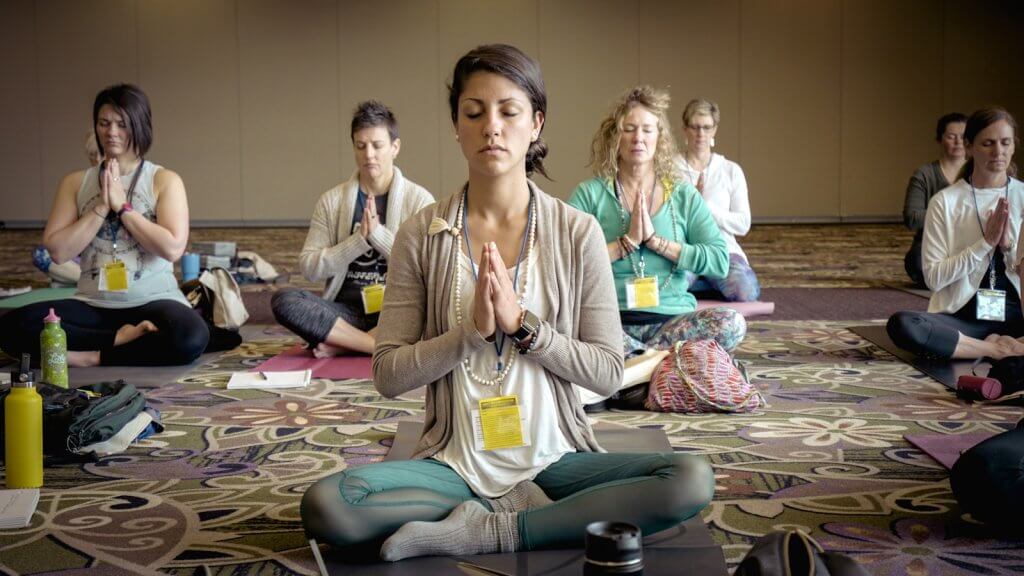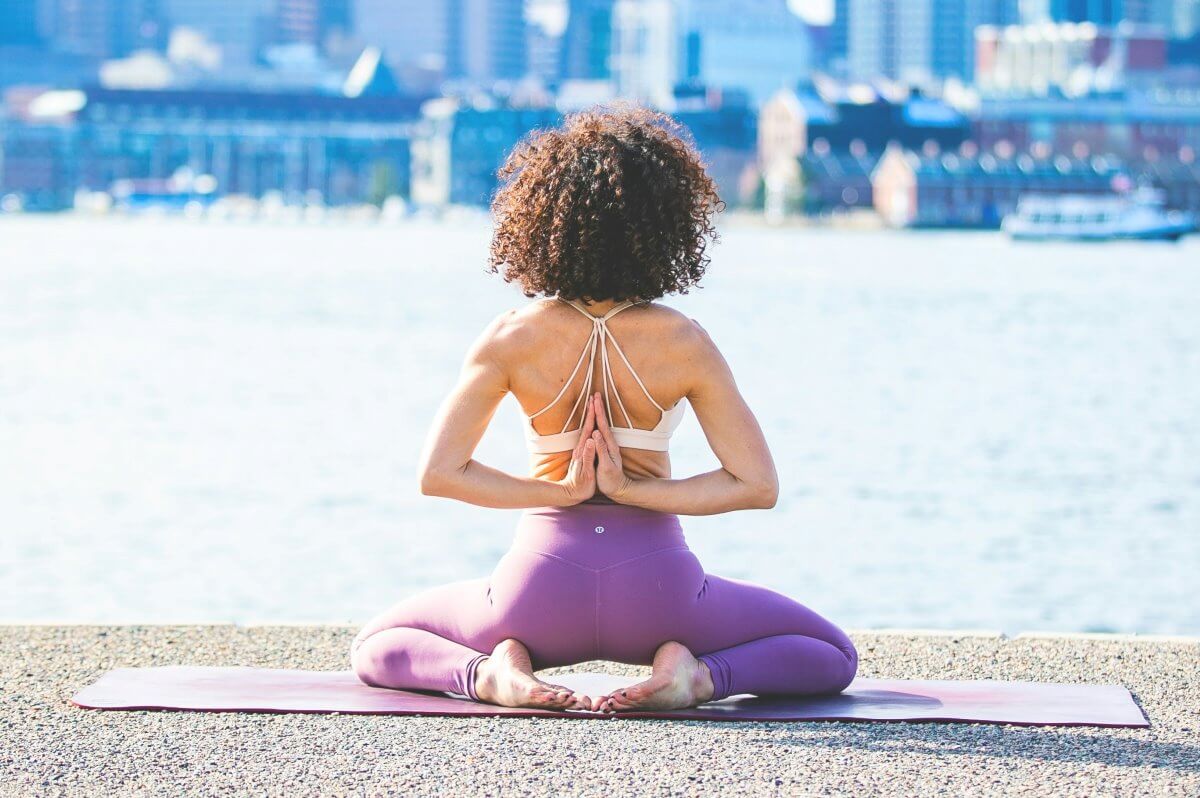Yin Yoga, a slow-paced style of yoga developed in the late 1970s, focuses on holding passive poses for extended periods to target connective tissues and improve flexibility. This meditative practice, rooted in Traditional Chinese Medicine principles, offers a unique approach to physical and mental well-being by emphasizing stillness and inner awareness.
Principles of Yin Yoga
Yin Yoga is guided by four fundamental principles that ensure a safe and effective practice. The first principle is to find an appropriate edge, entering poses slowly and mindfully to experience moderate sensation without pain. The second principle emphasizes relaxing the muscles to target connective tissues. Thirdly, practitioners are encouraged to remain relatively still for extended periods, typically holding poses for 3-6 minutes. Finally, it’s crucial to enter and exit poses slowly, respecting the body’s newfound sensitivity.
- Come to an appropriate edge of sensation
- Relax muscles to target connective tissues
- Hold poses for longer durations (3-6 minutes)
- Enter and exit poses slowly and mindfully
These principles work together to create a practice that balances the body’s yin and yang energies, stimulates meridians, and promotes deep relaxation. By adhering to these guidelines, practitioners can safely explore the benefits of Yin Yoga, including improved flexibility, reduced stress, and enhanced mindfulness.
Yin Yoga and Connective Tissue

Yin Yoga uniquely targets the body’s connective tissues, including ligaments, tendons, and fascia, through long-held passive poses. This practice stimulates and stretches the fascia, promoting its adaptability and improving nutrient distribution throughout the body. By applying gentle stress to these tissues, Yin Yoga can increase flexibility, enhance joint health, and potentially stimulate collagen and elastin production.
- Focuses on deep connective tissues rather than muscles
- Improves flexibility and range of motion in joints and ligaments
- Stimulates fascia, enhancing its elasticity and overall body function
- May increase production of hyaluronic acid, which lubricates joints and muscles
- Potentially aids in preventing future injuries by gradually expanding connective tissue
Meridian Stimulation in Yin Yoga
Yin Yoga incorporates the concept of meridians from Traditional Chinese Medicine, focusing on stimulating these energy pathways through specific poses. Practitioners believe that holding poses for extended periods can unblock and balance the flow of qi (life force energy) along these meridians, promoting overall health and well-being. Each yin pose is associated with particular meridians, allowing practitioners to target specific organ systems and address imbalances.
- Poses target different meridians: for example, forward folds stimulate the kidney and urinary bladder meridians
- Extended hold times are thought to enhance energy flow and release blockages
- Practitioners may experience sensations along meridian pathways during poses
- Combining meridian theory with modern anatomy enhances the holistic approach of Yin Yoga
Benefits of Yin Yoga
Yin Yoga offers numerous benefits for both physical and mental well-being. Here are some of the key advantages:
Physical Benefits
- Increased Flexibility: Yin Yoga targets connective tissues, improving overall flexibility and range of motion, especially in areas like the hips, pelvis, and lower back.
- Improved Joint Mobility: The practice enhances joint health by gently stressing ligaments and tendons, promoting better mobility and reducing the risk of injury.
- Enhanced Circulation: Long-held poses stimulate blood flow, improving overall circulation throughout the body.
- Fascia Release: Yin Yoga effectively releases fascia, the connective tissue that covers muscles, helping to reduce pain and improve overall body function.
Mental and Emotional Benefits
- Stress and Anxiety Reduction: Regular practice has been shown to decrease stress and anxiety levels, promoting a sense of calm and balance.
- Improved Sleep: By activating the parasympathetic nervous system, Yin Yoga can help regulate sleep patterns and improve overall sleep quality.
- Enhanced Mindfulness: The practice encourages practitioners to be present and observe sensations, thoughts, and emotions without judgment.
- Emotional Balance: Yin Yoga can help release stored emotions and promote better emotional regulation.
Energy and Vitality
- Increased Energy: Despite its passive nature, Yin Yoga can boost overall energy levels by unblocking stagnant energy in the body.
- Improved Qi Flow: Based on Traditional Chinese Medicine principles, Yin Yoga is believed to stimulate meridian lines, enhancing the flow of qi (life force energy) throughout the body.
Additional Benefits
- Complementary to Active Practices: Yin Yoga balances more active (yang) forms of exercise, making it an excellent addition to a well-rounded fitness routine.
- Accessible to All Levels: The practice is suitable for beginners and experienced practitioners alike, offering benefits regardless of fitness level or flexibility.
- Nervous System Regulation: By activating the parasympathetic nervous system, Yin Yoga helps balance the body’s stress response, promoting overall health and well-being.
In conclusion, Yin Yoga offers a holistic approach to health, addressing both physical and mental aspects of well-being. Its gentle yet effective nature makes it a valuable practice for those seeking to improve flexibility, reduce stress, and enhance overall quality of life.
Yin Yoga Poses
Yin Yoga offers a variety of poses that target deep connective tissues and promote relaxation. Here are some key Yin Yoga poses and their benefits:
Butterfly Pose (Baddha Konasana)
Butterfly Pose is an accessible, beginner-friendly pose that targets the inner thighs, hips, and spine. To practice:
- Sit with the soles of your feet pressed together
- Hinge forward at your hips, allowing your spine to round
- Hold for 3-5 minutes
Benefits: Stretches inner thighs, hamstrings, and hips; promotes spinal flexibility
Caterpillar Pose (Paschimottanasana)
This seated forward fold can be challenging to hold but offers significant benefits:
- Sit with legs extended straight in front
- Fold forward from the hips, letting your spine round
- Hold for 3-5 minutes
Benefits: Stretches spine and hamstrings; promotes relaxation
Sphinx Pose (Salamba Bhujangasana)
Sphinx Pose is excellent for counteracting the effects of prolonged sitting:
- Lie on your stomach with forearms parallel on the ground
- Gently lift your torso, keeping hips and legs rooted
- Hold for 3-5 minutes
Benefits: Strengthens core and spine; opens chest and hip flexors
Supported Fish Pose (Matsyasana)
This pose uses props to open the chest and shoulders:
- Recline with one block under your shoulder blades and another supporting your head
- Adjust block height for comfort
- Hold for 3-5 minutes
Benefits: Opens chest and shoulders; improves posture
Legs-Up-the-Wall Pose (Viparita Karani)
A restorative pose that promotes relaxation and circulation:
- Sit close to a wall and swing your legs up against it
- Lie back with your hips close to or touching the wall
- Hold for up to 15 minutes
Benefits: Boosts circulation; reduces stress and fatigue
Child’s Pose (Balasana)
A calming pose that stretches the back and hips:
- Kneel and sit back on your heels
- Fold forward, resting your forehead on the mat
- Hold for 3-5 minutes
Benefits: Releases tension in the back and hips; promotes relaxation
Remember, in Yin Yoga, poses are typically held for 3-5 minutes or longer. Focus on relaxing into the pose, breathing deeply, and allowing gravity to deepen the stretch. Always listen to your body and use props as needed to support your practice.
Yin Yoga vs Yang Yoga
Yin Yoga and Yang Yoga represent two complementary approaches to yoga practice, each with distinct characteristics and benefits. Here’s a comparison of these two styles:
| Aspect | Yin Yoga | Yang Yoga |
|---|---|---|
| Pace and Intensity | Slow, passive, and meditative | More active, dynamic, and energetic |
| Pose Duration | Long holds (typically 3-5 minutes per pose) | Shorter holds, often synchronized with breath |
| Target Areas | Deep connective tissues (fascia, ligaments, joints) | Primarily muscles and blood flow |
| Focus | Flexibility, joint mobility, and energy flow | Strength, stamina, and visible flexibility |
| Energy Cultivation | Cooling and inward-focused | Warming and outward-directed |
| Mental Approach | Emphasizes relaxation, surrender, and introspection | Cultivates focus, determination, and endurance |
| Practice Style | Often floor-based with props for support | Typically more standing and active postures |
| Influence | Rooted in Traditional Chinese Medicine (meridians and energy flow) | Includes styles like Vinyasa, Ashtanga, and Power Yoga |
| Complementary Nature | Complements Yang Yoga by providing a balanced approach to well-being | Complements Yin Yoga for a well-rounded physical and energetic practice |
Yin Yoga
Yin Yoga is a slower-paced, more meditative form of yoga that focuses on stretching connective tissues and improving flexibility. Key aspects include:
- Passive poses held for longer durations (typically 3-5 minutes)
- Targets deep connective tissues like fascia, ligaments, and joints
- Emphasizes relaxation and surrender in poses
- Aims to improve flexibility, joint mobility, and energy flow
- Often practiced on the floor with props for support
- Rooted in Traditional Chinese Medicine concepts of meridians and energy flow
Yang Yoga
Yang Yoga refers to more active, dynamic styles of yoga that focus on building strength, stamina, and flexibility. Characteristics include:
- More dynamic movements and flowing sequences
- Shorter hold times for poses, often synchronized with breath
- Primarily works on muscles and blood flow
- Builds strength, stamina, and more visible flexibility
- Often practiced standing or in more active postures
- Includes styles like Vinyasa, Ashtanga, and Power Yoga
Key Differences
- Pace and intensity: Yin is slow and passive, while Yang is more active and energetic.
- Duration of poses: Yin poses are held for several minutes, Yang poses for shorter periods.
- Target areas: Yin focuses on connective tissues, Yang on muscles.
- Energy cultivation: Yin is cooling and inward-focused, Yang is warming and outward-directed.
- Mental approach: Yin emphasizes surrender and introspection, Yang cultivates focus and determination.
Complementary Nature
Despite their differences, Yin and Yang Yoga are often seen as complementary practices. Many practitioners incorporate both styles into their routines to achieve a balanced approach to physical and mental well-being. Some classes, known as Yin-Yang Yoga, even combine elements of both styles within a single session, offering a comprehensive practice that addresses various aspects of physical and energetic health.
By understanding the unique benefits and characteristics of each style, practitioners can choose the approach that best suits their needs or combine both for a well-rounded yoga practice.






